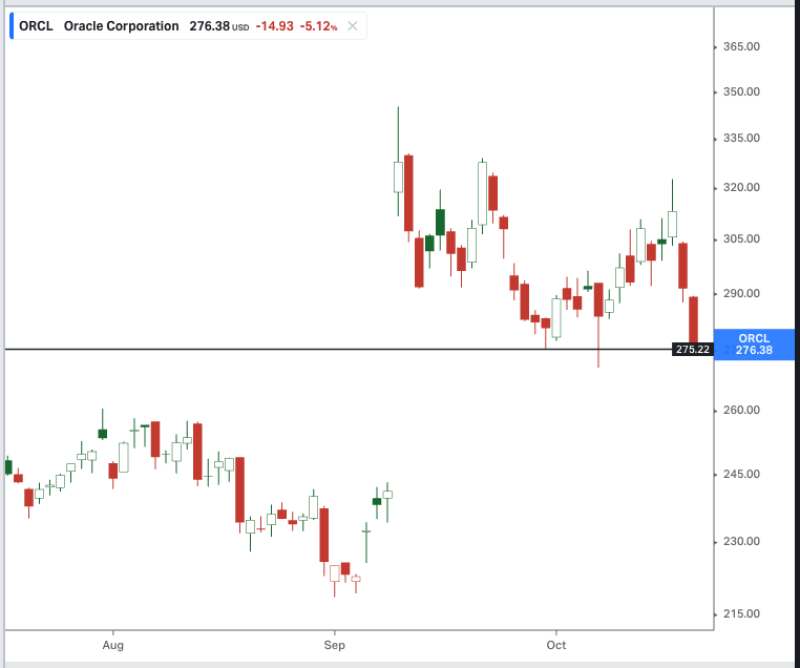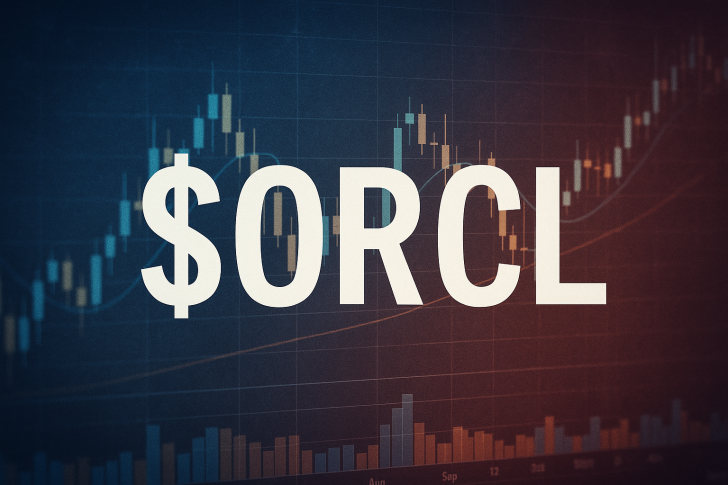Oracle Corporation stumbled in Tuesday's trading session, dropping more than 5% even after posting solid quarterly results and upgrading its cloud infrastructure forecast. The disconnect between strong fundamentals and negative price action has left many investors wondering whether this marks a temporary pause or signals deeper concerns about stretched valuations in the AI sector.
Strong Cloud Numbers Can't Stop the Slide
Oracle's earnings call highlighted impressive momentum across its cloud business. Oracle Cloud Infrastructure continues growing at double-digit rates, while strategic partnerships with NVIDIA are positioning the company as a key player in enterprise AI workloads. Management raised their long-term revenue projections, citing accelerating demand and operational improvements. Yet none of this prevented shares from closing at $276.38, down $14.93 from the prior session.
Some market observers, including trader t3live, called it a textbook "sell-the-news" reaction—where good news gets met with selling pressure because expectations were already baked into the price. After weeks of anticipation and steady gains leading into the announcement, profit-taking appears to have taken over.

What the Chart Shows
The technical picture tells a straightforward story of momentum reversing. Oracle is now testing the $275 support level that held back in late September. Above current prices, resistance sits around $310–$320, where previous recovery attempts stalled out. Since early September, the stock has been making lower highs—a classic sign of fading bullish conviction. The most recent candle on the daily chart is long and red, breaking cleanly below the recent consolidation zone and suggesting active distribution.
If $275 gives way, the next meaningful support doesn't appear until around $260, a level that coincides with the August lows. For bulls to regain control, Oracle would need to push back above $290 and hold it convincingly.
Oracle's fundamentals remain solid. Cloud revenue is accelerating, AI partnerships are expanding, and guidance was raised. So why the selloff? The simplest explanation is that all of this was already reflected in the stock price before earnings. When reality meets sky-high expectations, even good news can disappoint. There's also growing fatigue around AI themes across the broader market. After months of explosive gains in AI-related stocks, investors are starting to question whether growth can maintain this pace indefinitely.
Technical factors are adding to the pressure. Recent upswings came on declining volume, suggesting buyers lacked conviction. The stock hasn't been able to reclaim its 20-day moving average, and the pattern of lower highs since September points to weakening demand at higher prices.
 Saad Ullah
Saad Ullah

 Saad Ullah
Saad Ullah


